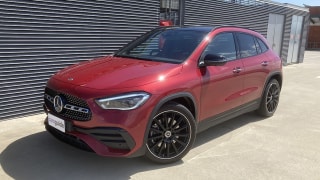Let’s list those changes briefly, as they inform the car you see before you.
The pre-facelift UX released in 2018 was criticised for riding too harshly and not being fun enough to drive.
So, Lexus says the MY23 version’s steering rack is better braced, the suspension and rear adaptive dampers have been retuned, the chassis gains more spot welds for added rigidity and the body is now stiffer and stronger than before. These are learnings directly applied from the UX300e EV version released in late 2021.

Most buyers will probably be more impressed with a now two-inch larger touchscreen, updated and (at long last!) easier-to-operate multimedia system, post-crash emergency services-callout should the driver end up incapacitated, upgraded voice recognition system, more-effective lane-keep assistance, improved traction through corners, better surround-view monitor and jazzed-up trim presentation.
Collectively, they strive to finally bring the expected/demanded on-brand qualities lacking from the previous model and in the UX’s largely-patchy competitor set – namely the Audi Q2, BMW X2, Jaguar E-Pace, Mercedes-Benz GLA and Volvo XC40.
This is especially so when sizing up the entry-level front-wheel drive grades (euphemistically dubbed 2WD at these exalted heights) of each, as we have done with the least-expensive hybrid version of the UX, the 250h Luxury from $53,820 (all prices are before on-road costs).

Costing nearly $8000 more than the base 200 Luxury petrol version, the hybrid accounts for the lion’s share of sales, and really has no direct electrified premium rival at that price point, except in the recently-released Alfa Romeo Tonale Ti from $49,900 – though that’s a mild-hybrid set-up with a 48-volt battery.
Along with an electric motor and a small Nickel-metal Hydride (Ni-MH) battery, the 250h Luxury is compellingly equipped for a base grade, including a 12.3-inch touchscreen, wireless Apple CarPlay, wired Android Auto, Bluetooth telephony, ‘Hey, Lexus!’ voice recognition, 10-speaker audio, digital radio, satellite navigation, remote engine-start/door-unlocking/hazard flashers/buzzer, acoustic windscreen glass, heated/powered mirrors, powered steering column, heated/powered front seats, climate control, keyless entry/start, a powered tailgate, roof rails, alarm and 17-inch alloys.

The 250h Luxury also comes with ‘Enhancement Pack 2’, featuring a powered tailgate with kick sensor, a wireless phone charger, cornering lights, headlight cleaners and rear privacy glass.
On the safety front, there’s all the usual driver-assist tech equipment including Autonomous Emergency Braking (AEB), lane-support systems and rear-cross traffic alert, amongst other items. Check our safety section for a full rundown.
So, yes, the UX 250h Luxury represents strong value. Even for a luxury-branded vehicle.






















